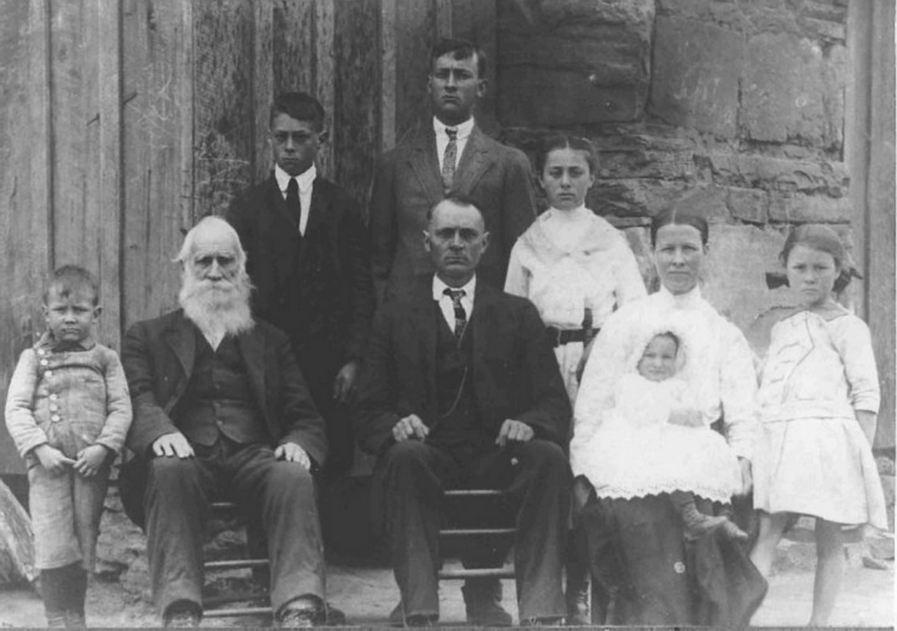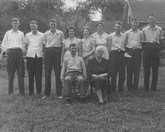|
From the Brevard News, January 11,
1929
The Old Turnpikes
For generations, travel and transportation was,
compared to modern standards, decidedly limited throughout this section. The main traveled
roads scarcely equaled “one-way cartways” in the backwoods sections. “Rapid transit” was
practically limited to horseback. Stage coaches and carriages were few in number. To pull a
loaded coach or fair load of freight required a team of four or six.
The settlement and development of the upper French
Broad River and its tributaries and of the valleys of Toxaway, Horsepasture, Whitewater,
Little Tennessee and others farther west developed considerable travel and, to meet this
demand, in the early part of the last century [1800’s], the Western Turnpike Road was
constructed (roughly speaking) from Asheville through what is now Buncombe, Henderson,
Transylvania, Jackson and Macon Counties. It followed approximately the Old Asheville Road as
far as Brevard and the Cashiers Valley Road farther west, and closely followed the old
Cherokee trail (Eastatoe). Toll gates were across the roads every few miles (generally 10 to
15 miles apart), and the toll gate keeper usually had facilities to care for “man and beast”.
The entertainment would include lodging and feeding anything from a single wayfarer to a
house of militia—a meat supply that would vary from a “cold bite” to roasting an ox whole, or
other things in proportion. With a small crowd, there was an abundance of room for all. With
a large crowd, sometimes every nook and cranny of the building, the outhouses, and barn lofts
would be occupied. Stable and shed room was liberal, and a number of large pens could
accommodate droves of cattle, sheep and hogs. The livestock for market traveled on their own
“shank mares” instead of in iced refrigerators. “Mine host” never knew far in advance whether
he would have to feed one or a hundred—man or beast.
It was not long after the advent of the steam boat
before the river boats developed a large freight traffic up the Savannah River to Hamburg, SC
(across the river from Augusta, GA), and at this point, as a source of supply was nearer than
previous sources, the wagon traffic developed from this section to
Hamburg.
To meet this new demand, the Little River Turnpike was
constructed, connecting with the Western Turnpike in the Mills River section, crossing the
ridge into the French Broad Valley near Etowah, crossing the French Broad at Shuford’s Bridge
(now Penrose), then up Little River to Laurel Creek, then by Buck Forest and Cedar Mountain,
connecting with the South Carolina road at Jones Gap.
With the standards of road building required at that
time, teams rarely traveled more than a couple of stages a day. The hard travel required long
rests, and there was ample time for the preparation for the “refreshments for man and beast”.
With ordinary travel, twenty to thirty miles per day was “fast travel”. Rarely a greater
distance was made except in the cases where relay teams were used.
A drive of cattle made up, say about Penrose, would be
destined for market farther south, probably Augusta, Columbia or Charleston. With an early
start and by keeping moving, it would probably reach the feeding pens about Cedar Mountain or
Jones Gap by noon and the foot of the mountain by night. The second night would reach
Greenville, SC, and so on to the final destination. There were enough men and boys with the
drove to “chase stragglers” and keep them on the road. The “drovers” were paid their wages
when the destination was reached and stock sold, being paid for the number of days actually
taken to make the trip, including half that time estimated for their return home. The mode of
operation was much the same for sheep and hogs.
In the old days, the tolls for travel and the tavern
and feed bills were ample to pay the innkeepers, maintain the roads and bridges, and pay good
dividends to the stockholders. For a long time, a well-to-do farmer or planter or business
man considered his certificate of turnpike as one of his most conservative and best
income-producing possessions.
The building of the “ole Piedmont Air Line” railroad
brought rail traffic as near as Greenville, SC; the Western North Carolina brought it to
Asheville in the [eighteen] seventies, and the Spartanburg and Asheville to Hendersonville in
the [eighteen] eighties. With each successive stage, the traffic on the turnpike grew less
and less. The extension of the public roads of the counties had a like effect. As the traffic
tolls dropped below the cost of upkeep, the stocks became worthless, and the Turnpike
companies were glad to turn over their roads to the public road
systems.
Source: Little River “Hogtown” Turnpike, Mary Jane
McCrary Collection Box 31, Folder 4,
Rowell Bosse NC Room, Transylvania County Library.
Items in [] supplied by transcriber, Linda O. Anders, 18 Feb. 2009.
For additional information on the "Little River
Turnpike Company" click
here.
^ Back to Top
|






